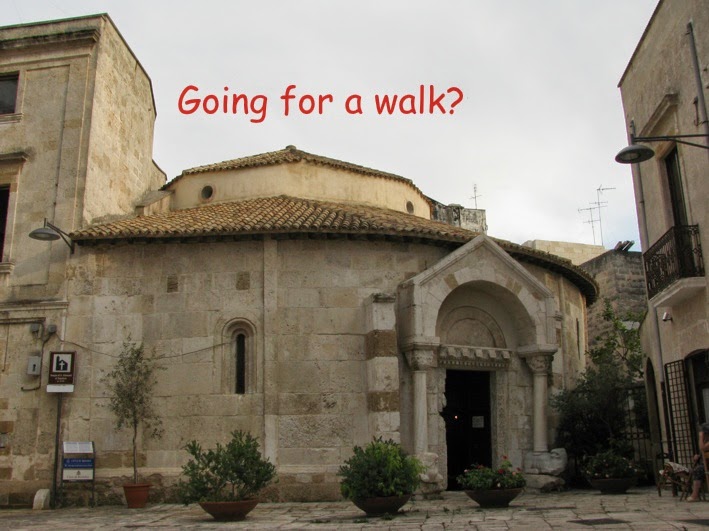These beautiful days of May inspire
trips and walks outside: mild weather and breeze make our visits enjoyable
relaxing moments that restore us, maybe after a busy week. Brindisi is one of those towns that are the best when you want to
go for a walk without too much effort but are anyway rich of history and
culture.
According to me, the old city centre of Brindisi is perfect
to spend a different afternoon: a lot of history, a lot of culture, but a sweet
and relaxed atmosphere overall.
 |
| San Giovanni al Sepolcro Church |
Among many historical and religious
buildings in the town, I was particularly fascinated by San Giovanni al Sepolcro
Church: it has been built during the Norman period and those bas reliefs that
decorate its outside walls make it wonderful. I found curious its horseshoe-shaped
plan: it was the first time I saw one of them!
 |
| San Giovanni al Sepolcro Church - a detail |
 |
| San Giovanni al Sepolcro Church - portal |
 |
| San Giovanni al Sepolcro Church - a detail |
Surely you can’t miss the Romanesque Cathedral and the large square where it’s
placed. Those of you who saw St. Nicola basilica in Bari may notice that their
plans are the same: three aisles and no transept (as we say: it’s the same the
world over!).
 |
| The Cathedral |
Ok, you’re in Brindisi and don’t you
want to see the symbol of the town?
Those that are indicated as the end of the Appian way? Yes, I’m exactly talking
about Roman pillars. Actually, it
seems that in reality they served as a point of reference for ships that arrived
in the harbour: just go down the long staircase and here we are in front of the
sea, in the marina once so important
for commerce also with the Orient ( unfortunately, after the fall of Roman
Empire of Occident made loose importance to the harbour too). For me, this is
the better place where you can have a good walk, enjoying the breeze, the scent of the sea and a wonderful
view.
 |
| Roman pillars |
 |
| Roman pillars |
 |
| The marina from Roman pillars |
 |
| Rudder-shaped Monument to the Sailor |
 |
| Walking along the shore you can meet some fisherman too |
And with this I wish you a good walk,
maybe hand in hand with your sweetheart, tasting an ice cream, kissed by the
sunshine at the twilight.
Enjoy yourselves!











davvero una bella città! io non ci sono mai stata..
RispondiEliminaDebora, se ne hai la possibilità di consiglio di andarci, perché è davvero bellissima! :)
Elimina